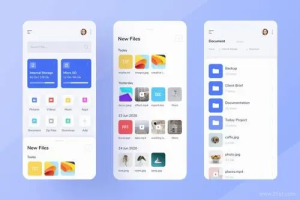当在Spring Boot应用中集成多个Redis数据源,支持哨兵模式和Cluster集群模式,可以按照以下步骤进行操作:
![图片[1]-SpringBoot Redis 多数据源集成:支持哨兵模式和Cluster集群模式-连界优站](http://www.6x66.cn/wp-content/uploads/2023/07/image-267.png)
步骤1:添加依赖
在Spring Boot项目的pom.xml文件中添加Redis相关依赖,包括spring-boot-starter-data-redis和jedis或lettuce(根据你选择的连接池客户端)。
步骤2:配置哨兵模式
如果需要使用哨兵模式,需要在application.properties或application.yml文件中添加相关配置:
# Redis Sentinel 配置
spring.redis.sentinel.master=your-sentinel-master-name
spring.redis.sentinel.nodes=your-sentinel-host1:port, your-sentinel-host2:port, ...
spring.redis.password=your-redis-password (如果有密码的话)步骤3:配置Cluster集群模式
如果需要使用Cluster集群模式,需要在application.properties或application.yml文件中添加相关配置:
# Redis Cluster 配置
spring.redis.cluster.nodes=your-cluster-host1:port, your-cluster-host2:port, ...
spring.redis.password=your-redis-password (如果有密码的话)步骤4:创建多个RedisTemplate
在Java代码中,你需要配置多个RedisTemplate实例,每个实例对应一个不同的数据源。
@Configuration
public class RedisConfig {
@Bean
@Primary
public RedisTemplate<String, Object> redisTemplate(RedisConnectionFactory redisConnectionFactory) {
RedisTemplate<String, Object> template = new RedisTemplate<>();
template.setConnectionFactory(redisConnectionFactory);
// 配置序列化等其他设置
return template;
}
@Bean(name = "secondRedisTemplate")
public RedisTemplate<String, Object> secondRedisTemplate(@Qualifier("secondRedisConnectionFactory") RedisConnectionFactory redisConnectionFactory) {
RedisTemplate<String, Object> template = new RedisTemplate<>();
template.setConnectionFactory(redisConnectionFactory);
// 配置序列化等其他设置
return template;
}
}在上面的代码中,我们配置了两个RedisTemplate实例,一个是默认的主数据源(Primary),另一个是第二个数据源。你可以根据需求配置更多的RedisTemplate实例。
步骤5:配置Redis连接工厂
为了支持多数据源,需要配置多个Redis连接工厂。
@Configuration
public class RedisConfig {
// ... 其他配置 ...
@Bean
public RedisConnectionFactory secondRedisConnectionFactory() {
RedisSentinelConfiguration sentinelConfig = new RedisSentinelConfiguration();
sentinelConfig.master("your-sentinel-master-name");
sentinelConfig.sentinel("your-sentinel-host1", port1);
sentinelConfig.sentinel("your-sentinel-host2", port2);
// 添加更多哨兵节点
// 如果有密码,设置密码
sentinelConfig.setPassword(RedisPassword.of("your-redis-password"));
return new JedisConnectionFactory(sentinelConfig);
// 或者使用 LettuceConnectionFactory,根据你的连接池客户端选择
}
}步骤6:使用多数据源
现在,你已经配置了多个数据源,可以在需要的地方使用它们。在Service或Repository层,可以使用@Qualifier注解来指定使用哪个数据源。
@Service
public class MyService {
private final RedisTemplate<String, Object> redisTemplate;
private final RedisTemplate<String, Object> secondRedisTemplate;
public MyService(RedisTemplate<String, Object> redisTemplate, @Qualifier("secondRedisTemplate") RedisTemplate<String, Object> secondRedisTemplate) {
this.redisTemplate = redisTemplate;
this.secondRedisTemplate = secondRedisTemplate;
}
// 在这里使用redisTemplate和secondRedisTemplate进行操作
}这样就能在Spring Boot应用中实现支持哨兵模式和Cluster集群模式的多数据源集成。记得根据实际情况配置更多的数据源,让你的应用更加灵活和高效。






































